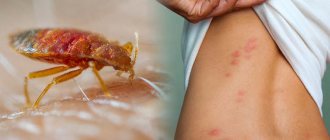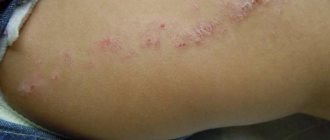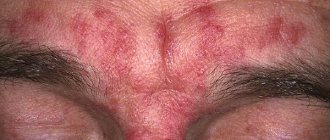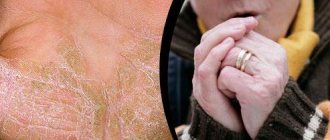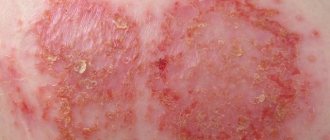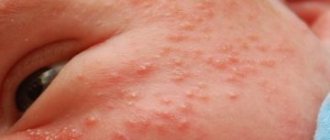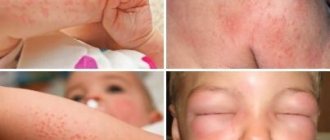Outdoor recreation is inextricably linked with such a nuisance as insect bites. Mosquitoes, midges, wasps and other winged inhabitants of forests and fields not only interfere with the peaceful enjoyment of nature, but can also cause serious health consequences.
During a bite, many insects inject poison into the wound, which causes severe pain, swelling, fever, and in the most severe cases, allergies and anaphylactic shock. Unfortunately, a person does not always know whether he is allergic to the bite of a certain insect, therefore, when hiking or while relaxing in nature, it is necessary to carry antihistamines with you, and if symptoms intensify, immediately consult a doctor.
Symptoms
The severity of symptoms from an insect bite varies from person to person. A normal reaction will result in pain, swelling and redness. Disinfect the area (wash with soap and water) and apply ice to reduce swelling.
A large local one will lead to swelling that spreads beyond the bite site. For example, a bite on the forearm can cause the entire arm to swell. Despite its alarming appearance, this condition is often treated as normal.
An unusually painful or very large local reaction requires medical attention. Since this condition may persist for two to three days, antihistamines and corticosteroids are prescribed to reduce discomfort.
Fire ants, yellow jackets, hornets , and wasps sting repeatedly. Honeybees have barbed stingers that remain under the skin of their prey. The sting is best removed by scraping rather than pulling to avoid introducing more venom.
Almost everyone who is stung develops an itching, localized pimple or lump at the site of the sting that usually goes away within 30 to 60 minutes. Sometimes a small bubble appears within four hours. The blister has little chance of becoming infected if it is not opened. These lesions may leave scars after treatment.
Treatment of bites is aimed at preventing secondary bacterial infection that occurs if the pustules are scratched. Clean blisters with soap and water to prevent secondary infection. Do not puncture the blister. Corticosteroid ointments and oral antihistamines will relieve itching.
Anaphylaxis
The most serious reaction is an allergic one. This condition requires immediate medical attention. Symptoms of an insect sting allergy include one or more of the following:
- Hives, itching, pain, swelling in areas other than the bite site;
- Abdominal cramps, vomiting, severe nausea, diarrhea;
- Chest tightness, difficulty breathing;
- Hoarse voice, swelling of the tongue or throat, difficulty swallowing.
An even more severe allergic reaction, or anaphylaxis, occurs within minutes of the bite. It is life-threatening. A dose of epinephrine is required, usually given through an auto-injector, and immediate medical attention is required. Signs:
- Dizziness or sudden drop in blood pressure;
- Loss of consciousness, cardiac arrest.
People who have had an allergic reaction to an insect sting have a 60% chance of having a similar or worse reaction if they are stung again.
Antiallergic drugs for insect bites
Antiallergic drugs used after insect bites can be divided into the following groups:
- Antihistamines or, otherwise, H1 receptor blockers: 1st generation - Diphenhydramine, Diprazine, Suprastin, Tavegil, Diazolin, 2nd generation - Astemizole, Terfenadine, 3rd generation - Loratadine (Claritin), Azelastine.
- Mast cell stabilizers: Nedocromil, Ketotifen, Intal.
- Glucocorticoids: Prednisolone, Hydrocortisone, Betamethasone.
- Symptomatic remedies: adrenaline, Salbutamol, Fenoterol.
It is also useful to read: Tumors and edema due to insect bites
And one more thing: What kinds of insects do not live at home - detailed descriptions and photographs. A terrible thing... (the article has more)
Of the antihistamines for insect bites, drugs of the new generation (II and III) are most often prescribed today. They do not have cardiotoxic or hepatotoxic effects, do not inhibit the central nervous system, and their duration of action is longer.
Claritin is widely used for allergies, including insect bites. However, it is worth noting that in some cases it is justified to prescribe first-generation drugs, which do not act for long, but their effect occurs faster.
Important:
When taking any medications, including Diazolin, Suprastin, Diphenhydramine, etc., you must remember that the medications themselves can, in rare cases, cause allergic reactions, including angioedema.
In folk medicine, to relieve irritation that occurs after insect bites, calendula tincture, onion, plantain and lemon juice, as well as a solution of baking soda are used. For mosquito bites, use tincture of milkweed and woodlice herb.
Essential oils of clove, anise, eucalyptus and basil repel insects.
Hydrocortisone and other glucocorticosteroids used topically, for example, in the form of an ointment, will help relieve local inflammation from insect bites.
Diagnostics
If you are concerned that you may have an allergy to insect venom, it is best to consult an allergist.
The doctor will take a detailed medical history. He will ask questions about previous bites (how many, where they were stung), reactions to them (what they experienced, how long the symptoms lasted, what they did to get relief).
An allergist will order one or more tests to diagnose insect venom allergies, such as a skin prick test, intradermal test, or blood test.
In the skin prick test, a small amount of liquid containing insect venom is placed on the back or forearm, which is then pricked with a small sterile probe to allow the liquid to seep under the skin.
If a raised reddish spot forms after 15-20 minutes, this indicates an allergy. In a blood test, a sample is sent to a laboratory to test for the presence of immunoglobulin E (IgE) antibodies to the venom.
Learn more Cockroach in the ear: how to get it out
If the skin prick test is negative or inconclusive, the doctor will recommend an intradermal skin test, in which a small amount of venom extract is injected directly under the skin. After 15 minutes, examine for signs of an allergic reaction.
This test is considered more accurate than a skin prick or blood test in determining the presence of IgE antibodies. If skin and intradermal tests are negative, a blood test is performed.
The strength of the reaction to the test does not indicate how severe your allergy will be the next time you are bitten.
Danger of bites, consequences
The severity and variety of symptoms depends on several factors:
- the type of insect that committed the bite;
- amount of toxic substance;
- individual characteristics of the body;
- immunity strength;
- age;
- correctness of therapy.
Bites from mosquitoes, midges, flies, and horseflies pass quickly and do not entail serious consequences. The risk of a severe allergic reaction increases when attacked by a bee, wasp, bumblebee, hornet, or spider. Allergies often develop due to numerous bites from lice, bed bugs, and fleas.
With the right approach, symptoms disappear within 24 hours, and the skin is completely restored in a maximum of 2 weeks. In the absence of qualified therapy, scratching, infection, the following appear:
- scars;
- cones;
- seals;
- ulcers;
- ulcers;
- eczema;
- additional rash;
- blisters.
When a stinging insect bites, poison enters the bloodstream; in addition to local allergies, there is a general deterioration in well-being - nausea, vomiting, dizziness, arrhythmia, changes in blood pressure, difficulty breathing, loss of consciousness, loss of coordination, etc. In this case, you should immediately take an antihistamine , seek help from specialists.
Important!
The most dangerous bite of a poisonous spider. A small child can die from suffocation or cardiac arrest in 30 minutes. The introduction of a special serum or a combination of antihistamines and antiallergic drugs can save lives.
Treatment of allergies to insect bites
Administer epinephrine immediately if symptoms of anaphylaxis develop.
Allergies to insect bites are treated in two stages:
- The first step is to immediately treat symptoms when they occur.
- The second stage is the preventive treatment of the underlying allergy using venom immunotherapy.
Life-threatening allergic reactions progress very quickly and require immediate medical attention. Emergency treatment usually involves taking certain medications, such as epinephrine, antihistamines, sometimes corticosteroids, intravenous fluids, oxygen, and other methods. Once stabilized, patients require close observation in a hospital inpatient unit for one night.
Self-administered injectable epinephrine is often prescribed as an emergency rescue treatment for allergies. People who have previously had problems with bites and rely on adrenaline should always remember to carry it with them.
Additionally, because one dose may not be sufficient to reverse the reaction, recent guidelines recommend keeping two doses of injectable epinephrine available. Even if symptoms improve after a single dose of epinephrine, immediate medical attention is recommended after an insect bite.
Immunotherapy, allergy shots
Long-term treatment for insect sting allergies is called subcutaneous immunotherapy (SCIT). This is a highly effective program administered by an allergist that prevents future allergic reactions to insect stings.
This is the only treatment that changes the immune system. Prevents the development of new allergies and asthma, has a long-term positive effect, even after completion of therapy.
Indicated for allergic conditions affecting the nose and eyes (allergic rhino-conjunctivitis), ears (allergic otitis media), lungs (bronchial asthma), as well as severe allergies to insect bites. The injections are effective for many allergens, including trees, grass, weeds, mold, house dust, animal dander, and insect bites.
Immunotherapy is the administration of gradually increasing doses of poison to reduce sensitivity to it.
An extract of a small amount of the allergen is injected under the skin of the hand. The injection is given once a week (sometimes more often) for about seven months. Further, injections are carried out every two weeks, then every four weeks. The duration of therapy ranges from three to five years, sometimes longer.
If you think you are allergic to insect stings, talk to an allergist. Based on your past history and certain tests, the doctor will determine whether you are a candidate for skin testing and immunotherapy.
Sublingual immunotherapy (SLIT)
It is a new form of immunotherapy. Instead of injecting the allergen under the skin, small doses are injected under the tongue. There are two types of SLIT - tablets and drops - but the only forms currently approved by the FDA are ragweed, grass pollen, and dust mite tablets.
People with allergies usually have them to more than one allergen. Subcutaneous therapy provides relief from more than one allergen, whereas SLIT treatment is limited to one. In addition, allergy shots have proven effective in treating allergies to avocado, melon, and some other fruits.
Allergies in a child: how dangerous is it?
Children often react stronger and for a longer period of time to exposure to an allergen than adults (although in some cases the situation is the opposite). Stains from insect bites can persist for several days.
Often insect bites are very itchy: due to constant itching, the child sometimes scratches the skin until it bleeds with the risk of infection, which can pose an additional health hazard.
Review
“Last year in the summer we had a very bad situation. We went to Crimea for a week, to Olenevka, and there Sashenka was bitten by some kind of wasp. She says it's big and thin. I thought he was fooling around, because in general he’s a calm boy and even if he’s in pain, he won’t yell. He immediately turned blue from screaming, we couldn’t hold him, it seemed like he was having some kind of convulsions. A terrible sight. His arm immediately swelled, so much so that he could not bend it. A rash appeared and spread to the back and face. And the child is still waving his arms and screaming. Okay, the first aid station was open. By the time we got him there, maybe twenty minutes had passed, he had already started to faint, his temperature had risen. The doctors injected me with something, put him on an IV, and said that the child was in anaphylactic shock and if we had been delayed, we might not have gotten him there. I later found out what kind of wasps they were. They say the road ones are brown and large, and their bite is the most painful. In the end, we were forced to stay in Crimea for another week, because only five days later Sasha was released from the first-aid post.”
Ilona, Voronezh
The photo below shows an example of severe irritation from insect bites in a child:
With high sensitization to the venom of hymenoptera insects, after a bite, a child can quickly develop a complicated reaction in the form of angioedema and anaphylactic shock. Parents of the baby should always keep this point in mind: if hives or other severe skin manifestations appear after an insect bite, as well as if general allergy symptoms occur, you should immediately consult a doctor. In this case, it is better not to self-medicate, because many medications have restrictions for use in childhood.
Prevention
Knowing how to avoid being stung by ants, bees, wasps, hornets, and yellow jackets makes summer more enjoyable for everyone. Stingers are most active in late spring, summer, and early autumn. Insect repellents do not work against stinging insects.
Yellow jackets (a type of wasp) nest on the ground and walls. Hornets and wasps live in bushes, trees, and on buildings. Use extreme caution when working or playing in these areas. Avoid open trash cans and exposed food at picnics. Also, try to reduce the amount of exposed skin outdoors.
Find out more How to get rid of itching
Effective methods of insecticidal treatment are the use of attractant baits. These baits often contain soybean oil and corn grits combined with chemicals. These insecticides last for weeks.
Allergist's recommendations
Allergists recommend the following additional precautions to avoid insect bites:
- Avoid wearing sandals or walking barefoot on the grass. Honey bees and bumblebees feed on white clover, a weed that grows on lawns.
- Never hit flying insects. If necessary, gently brush them away or wait patiently for them to fly away.
- Avoid places where insects swarm
- Do not drink from open cans or straws. Stinging insects crawl inside the jar and are attracted by the sweet drink.
- When eating outdoors, try to keep food covered at all times.
- Trash cans stored outside should have tight-fitting lids.
- Avoid sweet scents, hairsprays, colognes, and deodorants.
- Avoid wearing bright colors.
- You should be careful when working in the yard and gardening. Wearing shoes, socks, and working gloves will prevent bites on your arms and legs.
- Keep window and door screens in good condition. Close your windows when traveling by car.
- Always keep prescribed medications on hand. Follow instructions if you are stung. These medications are intended for immediate use in emergency situations.
- If you have had an allergic reaction to an insect bite, you should consult an allergist.
Treatment of secondary infection
In the absence of qualified therapy, scratching, or the use of inappropriate products, pathogenic microorganisms enter the wound, suppuration begins, cracks and weeping eczema appear, and the scale of inflammation increases. It is prohibited to use hormonal drugs in this case; folk remedies will not give the desired result. If the bite festers, use local antibiotics or combined medications containing antibacterial and hormonal substances.
- Levomekol. The ointment operates on the basis of two active components - methyluracil, chloramphenicol (chloramphenicol). Has antimicrobial, anti-inflammatory, restorative effect. It is used for difficult-to-heal wounds, ulcers, and the presence of infiltration. Treat the problem area 3 times a day. Before application, clean the wound of pus and contamination with hydrogen peroxide. To enhance the effect, it is allowed to make a bandage. The cost of the ointment is 140 rubles.
Ointments for treating insect bites
- Tetracycline ointment. Antibiotic for external use with a wide spectrum of action. It is used for acne, eczema, trophic ulcers, and infectious skin lesions. If the blister after a bite fills with pus and does not go away, treat it with tetracycline ointment twice a day. Initially applied to the finger, then distributed in a thin layer over the entire damaged surface. Do not use in children under 12 years of age. The price of the tube is 50 rubles.
- Elokom S. Combined preparation containing mometasone, salicylic acid. Stops allergies, destroys pathogenic microflora. Apply a thin layer to spots twice a day. The duration of therapy is no more than 5 days. For insect bites, symptoms disappear within a day. Itching, inflammation, burning, redness, peeling go away, tissue restoration accelerates. The price of an effective drug is 700 rubles.
- Microcide. A broad-spectrum antibiotic is prescribed for the treatment of deep wounds, ulcerative lesions, and inflammation of the mucous membranes. Available in solution form. Wounds from insect bites are washed or a compress is applied for several minutes. Before use, the drug is diluted with boiled water according to the instructions. Price within 600 rubles. for 1 liter of product.
Antibiotics for insect bites help in 2-3 days. In case of extensive damage to the skin or allergies, independent treatment is prohibited; therapy is carried out under the supervision of specialists.
Questions and answers
What should I do if I was stung by a bee, when should I contact an allergist?
What to do with a bee or insect sting depends on how your body reacts. A normal (non-allergic) reaction includes pain or discomfort, swelling, and redness in the area where the sting was made. If the stinger is still under the skin, remove it by scraping the area with a straight-edged card, such as a credit card.
Do not squeeze out the stinger or use tweezers because this will release more venom. Apply ice to the area to control swelling. Raise your arm or leg if you were stung there. Acetaminophen or ibuprofen helps relieve pain.
Do not give aspirin to anyone under 19 years of age.
For itching, you can take antihistamines or use calamine lotion. Although "normal" reactions are not considered life-threatening, avoiding being bitten in the future is a good idea.
Second type
The second type of response is similar to the first type of non-allergic reaction. These are larger local symptoms that cause swelling around the bite. For example, a sting in the front of the arm can cause swelling of the entire arm.
Remove the sting and treat swelling, pain and itching with a combination of ice and antihistamines. Swelling usually peaks two to three days after the bite and can last a week or more. Like the first reaction, it is not life-threatening. However, you may have significant pain and swelling that lasts for several days in the area where you were stung.
The last and most dangerous response is severe, life-threatening anaphylaxis. This is the most serious problem that requires immediate medical attention. Symptoms range from mild pimples or itching to severe reactions including shock and constriction of the airways.
If you know you have a severe allergy to insect stings, you should always carry an epinephrine auto-injector (EAI) with you and get tested by an allergist. If you are stung, use EAI, call 911, and go to the nearest emergency room at the first sign of anaphylaxis, even if you have already taken epinephrine.
How do I know if I was allergic to an insect sting?
Symptoms of an allergic reaction range from mild to severe. These include the following (separately or in combination):
- Hives;
- Itching;
- Swelling in areas distant from the bite;
- Dizziness or sudden drop in blood pressure;
- Hoarse voice, cough, tongue swelling, difficulty swallowing;
- Swelling in areas distant from the injury site;
- Abdominal cramps, vomiting, severe nausea, diarrhea;
- Loss of consciousness, cardiac arrest.
Learn more 7 quick ways to relieve swelling from a midge bite and prevent infections
Anaphylaxis is a serious, life-threatening symptom that impairs breathing, causes a sudden drop in blood pressure, and can lead to shock. Occurs within a few minutes after the bite. A dose of epinephrine, usually given through an auto-injector, and immediate medical attention are required.
Who is affected by
Allergies to stings can occur even after many normal reactions to them and at any age. Potentially life-threatening symptoms from insect venom occur in 0.4–0.8% of children and 3% of adults.
Is it possible to get rid of
Yes. For long-term protection, your allergist will treat you with immunotherapy. This treatment builds tolerance over time and provides up to 98% protection if you are bitten again. In addition to reducing the risk of a systemic response to future bites, immunotherapy significantly improves quality of life.
The duration of therapy is usually three to five years, but can be continued indefinitely, depending on how severe past reactions have been and the risk of future bites.
Should everyone have an epinephrine auto-injector?
This depends on individual factors, including your history of symptoms from the insect bite. Your doctor will determine if you are at high risk of developing a severe allergy and, if necessary, prescribe an epinephrine auto-injector.
What to do if there are serious consequences?
Treatment of complicated allergic reactions should be carried out by a doctor.
At the prehospital stage, for the treatment of acute laryngeal stenosis and normalization of blood pressure, inhalation of glucocorticosteroids through a nebulizer is used (0.25 mg Budesonide for compensated stage of stenosis, 0.5 mg for subcompensated stage, 1 mg for III degree laryngeal stenosis). The maximum number of inhalations is 3 with an interval of 20 minutes.
Suprastin for complications after insect bites is used when inhalation therapy is ineffective or in the absence of a nebulizer - intramuscularly or orally (for compensated stenosis). Systemic glucocorticoids (prednisolone) are administered intravenously, adrenaline subcutaneously.
To relieve an attack of suffocation, you can use Berodual, Salbutamol - through an inhaler or nebulizer.
It must be remembered that if the first signs of a severe form of allergy appear after an insect bite, the victim must be taken to the hospital as quickly as possible (you should also consult by phone on how to help the person). If those around you do not have experience in providing first aid, the victim should be placed on his back with a cushion of clothing under his head, provided with drink and not given medications whose effect is not completely certain. In many cases of acute allergies, it is the unprofessional actions of voluntary helpers that contribute to the aggravation of the situation, and therefore the best thing that can be done is to take the person to the doctor as soon as possible.
Useful video about allergies to insect bites: expert comments
Two main points for allergy sufferers
- A growing body of research shows that immunotherapy (also called allergy shots) is very effective. The treatment works like a vaccine, exposing you to increasing amounts of the allergen to make your immune system more resistant to it. By eliminating the allergic reaction, the treatment improves the quality of life of patients who are afraid of being bitten. While an epinephrine injection can prevent death and is a direct way to treat the allergy at the time of the bite, immunotherapy is the only way to actually prevent the reaction from starting.
- Beware of risk factors . Some people are at increased risk of serious reactions. These include those who:
- a history of severe or near-fatal exposure to the insect;
- heart disease, high blood pressure, lung disease who have had a reaction outside the bite site;
- asthma;
- prescriptions for taking beta blocker or ACE inhibitor medications;
- frequent unavoidable exposures, including beekeepers, gardeners.
For most people, an insect bite means nothing more than a little pain, swelling and redness. This is a normal reaction and can be treated at home. The allergy includes itching and swelling in areas other than the bite site. These reactions require immediate medical attention.
Symptoms of a severe allergic reaction, also called anaphylaxis, can cause not only skin symptoms, but any of the following:
- Chest tightness and difficulty breathing;
- Swelling of the tongue, throat, nose, lips;
- Dizziness, fainting, loss of consciousness, which can lead to shock, heart failure.
These symptoms require immediate attention at the nearest hospital department.
Why are fly bites dangerous?
Many people believe that a fly bite is practically harmless and will not cause any trouble other than a little pain and itching. But we must not forget that this insect is a carrier of dangerous infectious diseases. Their pathogens enter the body along with poison from the proboscis. A fly bite can cause the following ailments:
- Typhoid fever;
- Polio;
- Dysentery;
- Cholera;
- Sepsis.
The insect can also spread other diseases - tuberculosis, anthrax, tularemia, tryposonosis. All these diseases are very dangerous for humans, especially for children, the elderly and pregnant women. Consequently, the appearance of a burner fly in a house can cause irreparable consequences. You need to get rid of them as soon as possible, because all infectious diseases caused by them are very difficult and take a long time to treat, and can lead to death.
Some subspecies of flies can use warm-blooded organisms as a substrate for reproduction, laying their eggs in it. Most often this happens to pets. In this case, the consequences of a fly bite are very sad, because over time, larvae hatch from the eggs. They cause severe dehydration, vomiting, diarrhea, and cramping pain in the abdominal area. Sometimes, due to damage to the intestinal walls, internal bleeding occurs.
Such patients are necessarily hospitalized in the infectious diseases department. Often, measures to replenish fluid lost by the body are sufficient for treatment. Sometimes measures are required to remove the larvae.
Ordinary house flies that do not bite are also dangerous. They love to scavenge in garbage, feces and other places filled with bacteria and infections. On their legs, insects carry various diseases, and can become pathogens of hepatitis, salmonellosis, brucellosis, and worms.
Summary
- Insect bites are a common cause of life-threatening, serious allergic reactions;
- They are less likely to cause severe allergies, but may cause mild skin reactions.
- You should visit an allergist to diagnose the problem.
- If at risk, they must have an adrenaline injection device and a mobile phone to call for help.
- In case of emergency, call an ambulance.
Sources
Allen, Arthur S. (March 1948). “Persistent” insect bites “(cutaneous eosinophilic granulomas) mimicking lymphoblastomas, histiocytosis and squamous cell carcinoma.”
Goddard, Jerome (2002). A physician's guide to arthropods of medical significance. Boca Raton: CRC Press.
Ludman, S. W.; Boyle, R. J. (2015). "Allergy to stinging insects: current perspectives on venom immunotherapy". Journal of Asthma and Allergy.
Maynard, Robert J. Flanagan, Alison L. Jones; with a section on antidotes and chemical warfare by Timothy S. Marrs and Robert L. (2003). Antidotes. London: Taylor and Francis.
What kind of care is provided in the hospital after a bite?
Complications can manifest themselves in the form of redness and swelling of the skin. In frequent cases, a person experiences a burning sensation and itching.
The most serious complications include the following:
- itching and redness of the skin area distant from the lesion;
- hives and other skin rashes;
- dizziness;
- labored breathing;
- confusion;
- swelling of the nasopharynx and mouth;
- feverish condition;
- loss of consciousness;
- slight increase in body temperature;
- feeling of pain and tightness in the chest.
If you have one of the listed symptoms, you should immediately seek medical help. If precious time is lost, allergic reactions can worsen, resulting in anaphylactic shock.
Even a harmless insect bite can develop from a tumor into a purulent formation, in which the subcutaneous fatty tissue becomes inflamed. To prevent this condition, you need to treat the wound with a disinfectant solution.
